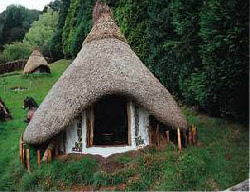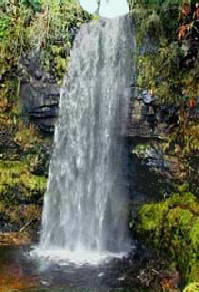
The Abercrave Area Today : The Holocene Era
Today we are in the Holocene epoch, the second epoch of the Quaternary Period.
Abercrave ( Abercraf ) is the Southern gateway to the Brecon Beacons National Park from Swansea, Wales' second city, and the M4 motorway. The National Park Boundary passes through the village and is marked by a large monolith alongside the A4067 access road to the upper Swansea Valley and the mountains of the Brecon Beacons range.The area is renowned for its many and varied walks, a number of which are published in detail at http://www.wales-hotel.co.uk/page56.html
The river Tawe which flows down the valley to the sea at Swansea is at its most spectacular around Abercrave where it plunges through gorges, over waterfalls and into deep rock basins. It is a sparkling clean salmon, trout and sea-trout river much prized by anglers for the variety and quality of its fishing. Visitors can buy fishing permits at the sports shop in Ystradgynlais, and sample fresh fish on some local restaurant menus.
There is also a wealth of industrial heritage to be found in the area from the Ynyscedwyn and Banwen Ironworks to old mine workings, canals, culverts, inclined plains, bridges, rail cuttings and small picturesque workers’ cottages.
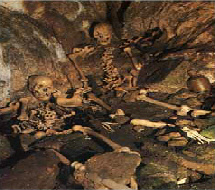
Bronze age skeletons in local cave st Showcaves for Wales.

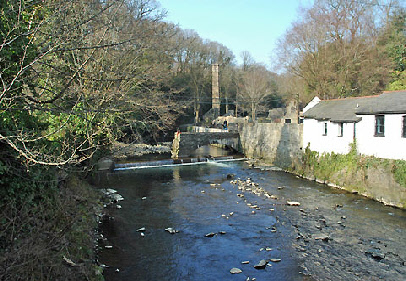
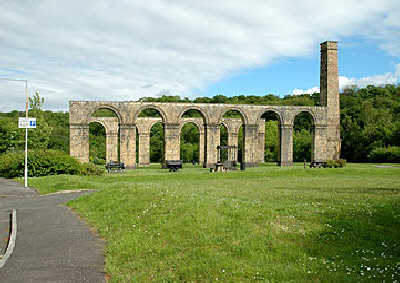
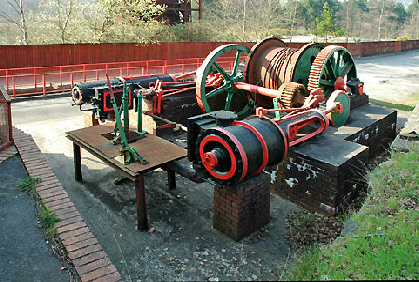
Aberdulais Ironworks
Ynyscedwyn Ironworks, Ystradgynlais
Cefn Coed Colliery Museum, Crynant
There is evidence of mining and metal working in the area since the Bronze Age, 3000 years ago and exhibits relating to this early industry can be seen at the Showcaves for Wales just two miles North of Abercrave. The remains of a substantial Roman marching fort are clearly visible by the side of Sarn Helen a roman road that runs over the hills past nearby Coelbren.
Bronze age house at Showcaves for Wales
Henrhyd Falls, Coelbren
Craig-y-Nos Castle, by night
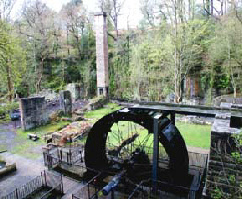
Aberdulais Ironworks
For people interested in the geology and ancient history of the valley there are lots of readily visible geological features, fossil bearing rocks and major faults with exposed strata. At Nant Llech in the valley just below Henrhyd falls are deposits containing fossils of blind fish, that are thought to have formed in ancient caves.
Jan Garren at Wales Ape & Monkey Sanctuary is a geologist who knows the area well and runs a field study centre. She overseas the technical content of this site.
Craig-y-Nos Castle and Country Park was the former estate of the famous opera singer Adelina Patti. The castle is now a hotel and the extensive grounds are open to the public as Craig-y-Nos Country Park. The park contains every species of tree indigenous to Britain and has a number of small lakes and lovely riverside walks.
a
A number of fault lines run across the region and Henrhyd Falls at Coelbren, the highest waterfall in South Wales, is the result of the slippage of such a fault. It is still mobile today and further slippages occur from time to time.
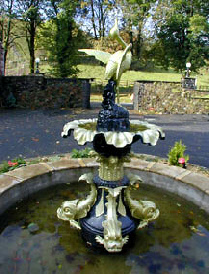
Locally Cast Iron Crane Fountain
Banwen Ironworks
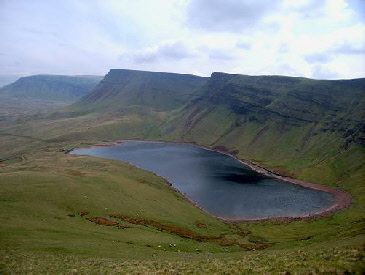
Llan-y-Fan Fawr overlooks the upper valley
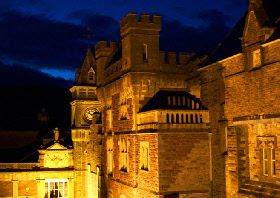
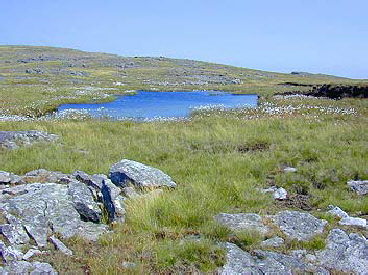
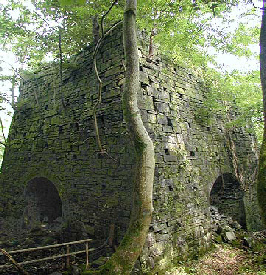
Limestone with ponds and sink holes on the Cribarth Mountain
